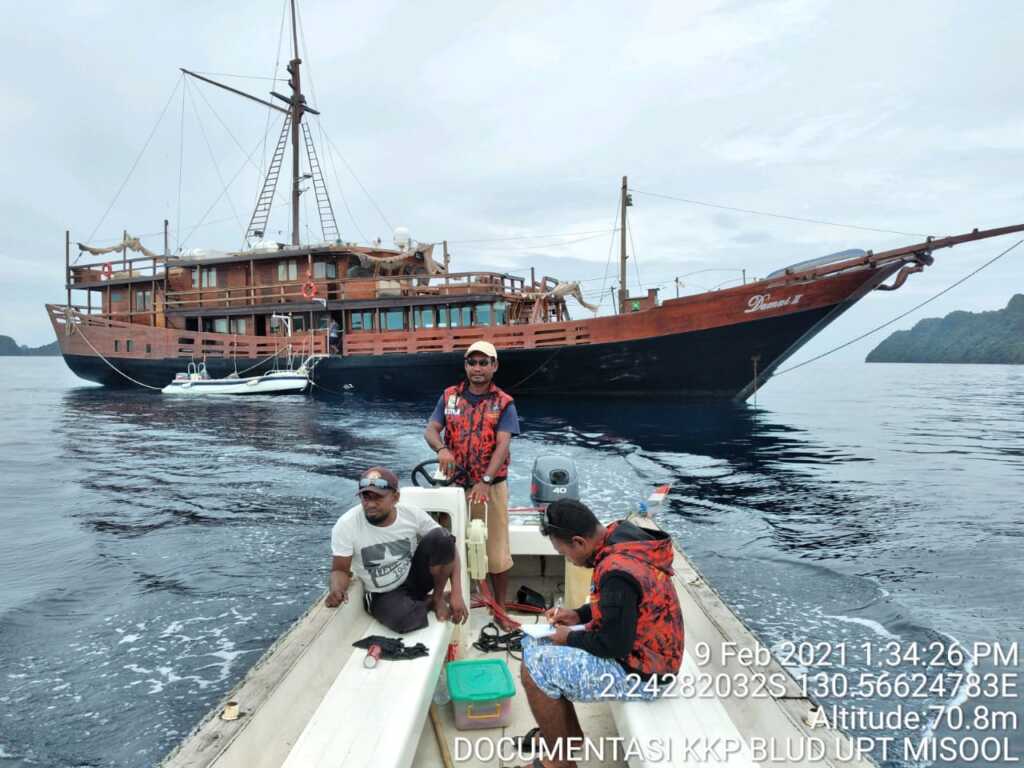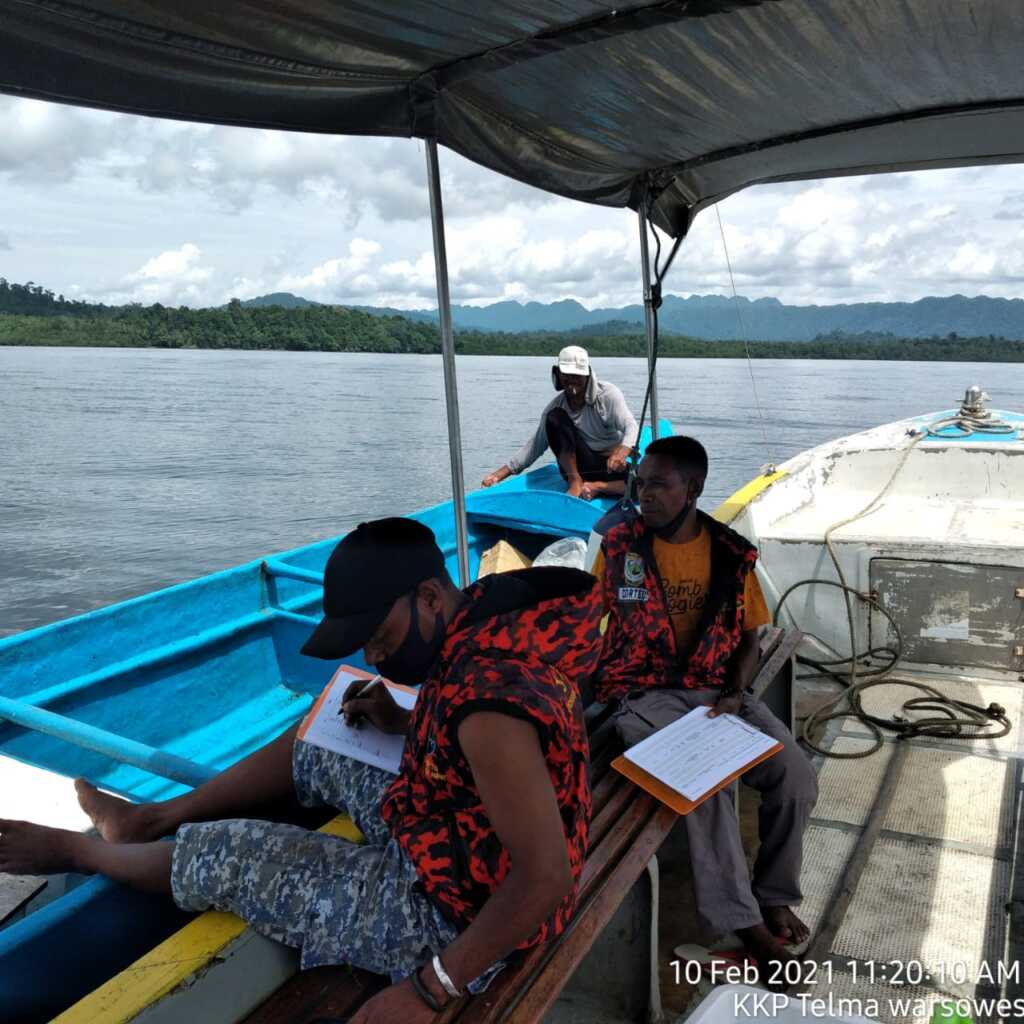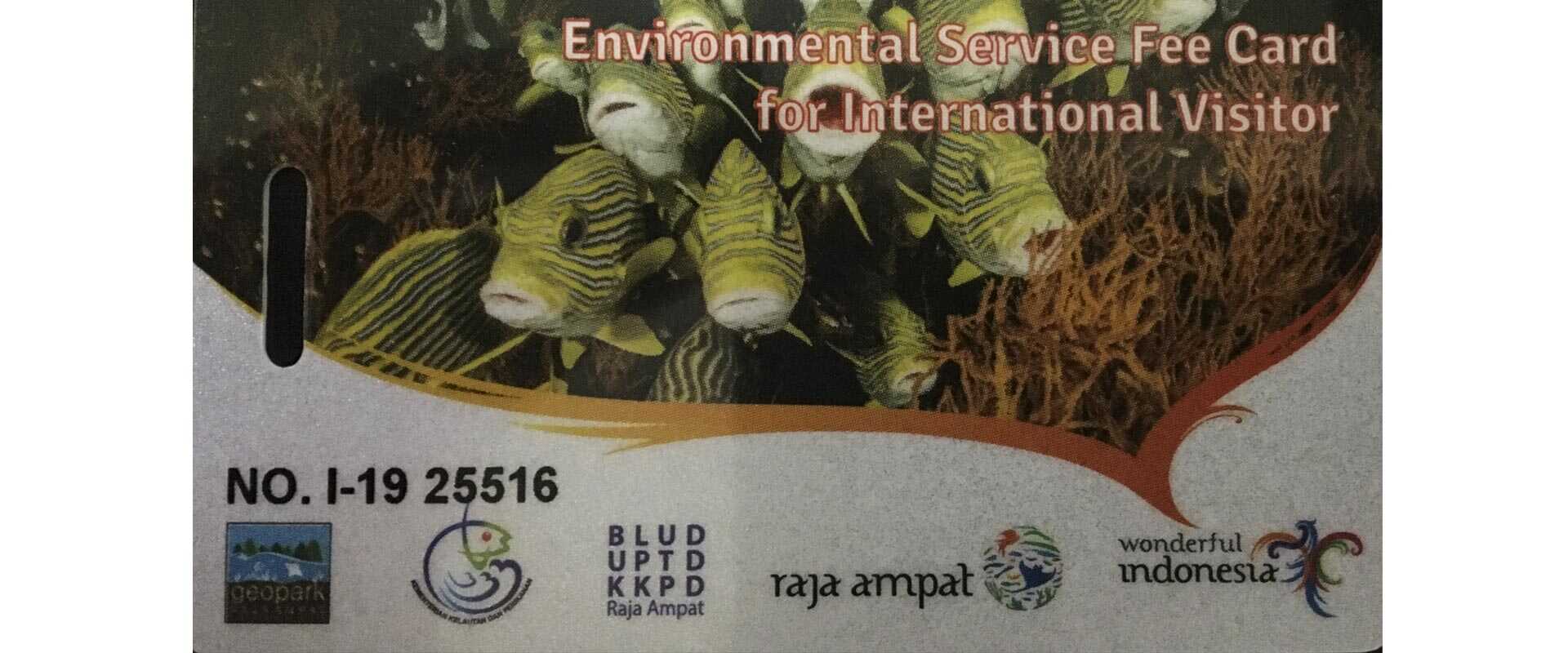Confusion over Raja Ampat Marine Park Entrance Fees: there are TWO! by Allan Ramandey*
Note: The official name for Raja Ampat’s Marine Park Ranger Patrols is “Jaga Laut”.
Dear readers,
Based on our patrol report’s findings, towards the end 2020 when tourism activities slowly commenced after the shutdown during the Covid-19 pandemic, there is some uncertainty on the paying of the park’s entrance fees. We also noticed that those violations were mostly due to the confusion amongst the tourism operators and/or tourists related to entrance fees collected by two different government entities on arrival in Raja Ampat. This confusion led to the false assumption that the entrance fee collected by the Raja Ampat Marine Park’s Authority*** was no longer valid.

Jaga Laut from Misool MPA just finished checking for entrance fees, collected by both the West Papua’s Province Government and Raja Ampat’s Regency Government, from one of the liveaboards encountered that day. (Photo by: BLUD UPTD Pengelolaan KKP Kepulauan Raja Ampat/2021).
Now, let’s briefly discuss the backstory that may have led to the false assumption that the Environmental Service Fee was no longer required, before discussing some of the actual facts that may have caused this issue to occur. Please, bear with us as it’s complicated, involving legislation on the national (Jakarta), provincial (West Papua) and regional (Raja Ampat) levels!
Previous visitors to Raja Ampat may remember that there was a period when the entrance fee collected was IDR (Indonesian Rupiah) 500,000 for Indonesian visitors, and IDR 1,000,000 for international visitors. This period was before and during the transition period that follows an enactment of certain types of national legislation.
During that time period, the Raja Ampat Marine Park’s Authority was the sole collector of a single entrance fee in the amount of IDR 425,000 for Indonesian visitor and IDR 700,000 for international visitor. Note: Changes to the amount of entrance fee collected by the Raja Ampat Marine Park’s Authority was one of the many impacts caused by the enactment of Act No. 23 of the Year 2014 of the Regional Government. This act essentially shifted the managing authority of the territorial sea and all its related aspects, from the Kabupaten (Raja Ampat’s regency’s government, located in Waisai) to the provincial government of West Papua (located in Manokwari).
This enactment was then followed by a major transition regarding different aspects of Act 23, from the regency to the provincial government, which includes the Raja Ampat’s Marine Protected Areas (MPAs) and all aspects of it’s management, the management unit, entrance fee, personnel status, adaptation of several legislations from regency level to province level, and so forth.
Now, as a direct implication to the 2014’s national legislation, their are now two entrance fees to Raja Ampat, collected by two government entities:
1. West Papua Province’s Government through the Raja Ampat Marine Park’s Authority, the official management unit for Raja Ampat MPAs. And by…
2. the Raja Ampat Regency’s Government through their Tourism Unit under the regency’s Tourism Agency.
In short, IDR 700,000 for international visitor and IDR 425,000 for Indonesian visitor are still collected by the Raja Ampat Marine Park’s Authority, while an additional IDR 300,000 for international visitors and IDR 75,000 for domestic visitors are collected by the Tourism Unit under the Raja Ampat’s Regency Tourism Agency.
Note: Although the entrance fees serve different purposes, both entrance fees are official, and are collected based on different level of legislations.
As mentioned above, the entrance fee collected by the Raja Ampat Marine Park’s Authority serves the purpose of managing (this encompasses efforts in conservation, preservation, and protection of) the Raja Ampat MPAs’ network. While the entrance fee collected by the Raja Ampat Regency’s Tourism Agency serves the purpose of managing tourism-related activities and all it’s aspects (and impacts) that occurs, and may occur, within the regency’s terrestrial territory.
Why not one fee paid to one entity? At least for now, this is due to the different governmental and financial systems implemented by each party collecting their respective entrance fee.
The Raja Ampat Marine Park’s Authority implemented a collection system similar to other government-managed public facilities such as hospitals, training centers, and so on. While the tourism unit, under the Raja Ampat Regency’s Tourism Agency, at least for now, still implements the conventional, governmental financial system, which is commonly implemented by government agencies within the level of the regional government.
Those differences in financial systems are regulated by various regulations in different levels of government that spans from national (Jakarta), West Papua province, and regency (Raja Ampat) levels. This became even more complex as the Raja Ampat Marine Park’s Authority and Tourism Unit under the Tourism Agency belongs to, and works for, different levels of government respectively: West Papua Province’s Government and Raja Ampat Regency’s Government.

Rangers from Mayalibit Bay MPA taking notes for Resources Use Monitoring (RUM) data collection. This is one of the regular activities conducted during a patrol session. Regular patrols was one of the main efforts financed through the purchase of Environmental Service Maintenance Fee collected by Raja Ampat Marine Park’s Authority. (Photo by: BLUD UPTD Pengelolaan KKP Kepulauan Raja Ampat/2021).
Both governments, West Papua Province Government and Raja Ampat Regency Government, and the stakeholders are still working to sort the aforementioned transition period, which also includes this entrance fee and all it’s related issues, in order to provide the most convenient solution(s), especially for the visitors. It’s complicated, and will surely take time to ‘integrate’ all the different aspects of Act 23 in different levels of government: but it is feasible.
As for the entrance fee collected by the Raja Ampat Marine Park’s Authority, we would like to inform you that this is still a valid collection under the West Papua Governor’s Regulation Number 4 of the Year 2019 on the Environmental Service’s Maintenance Fee in Raja Ampat Marine Park’s Authority. While for the entrance fee collected through Raja Ampat Regency’s Tourism Agency is also valid under it’s regency-level legislation. In other words, a visitor must pay both fees!
We sincerely realize that the issue related to entrance fees in Raja Ampat may have caused inconvenience for tourism operators and/or tourists.
Please bear in mind that, this ‘inconvenience’ was caused by initiatives developed by both West Papua’s Province and Raja Ampat Regency governments to sustainably preserve, conserve, and protect the unique beauty of Raja Ampat and it’s abundance of natural resources for the benefits of it’s users, and most importantly: the welfare of local communities in Raja Ampat.
Thank you very much for your kind support and understanding, dear readers.
* Data and Information Staff for Raja Ampat’s Marine Park Authority
*** The official name for Raja Ampat’s Marine Park Authority is Badan Layanan Umum Daerah Unit Pelaksana Teknis Daerah (BLUD UPTD) Pengelolaan Kawasan Konservasi Perairan (KKP) Kepulauan Raja Ampat.





































